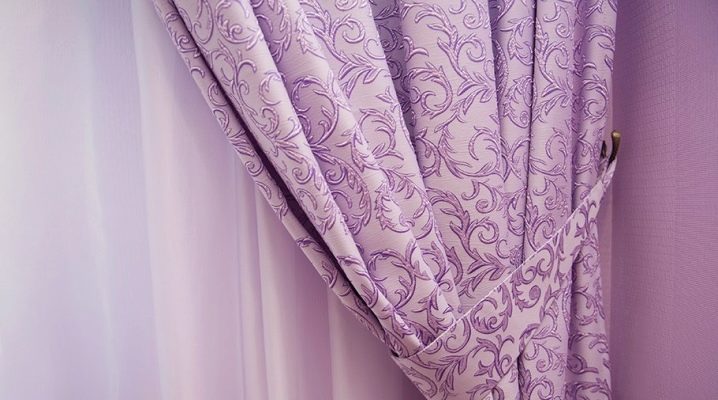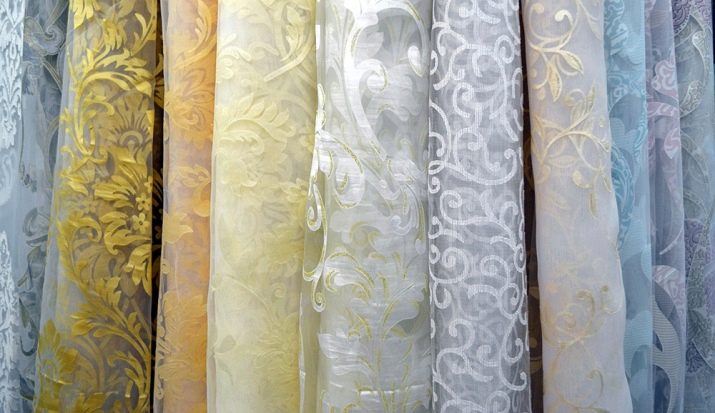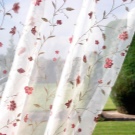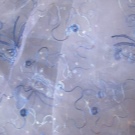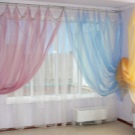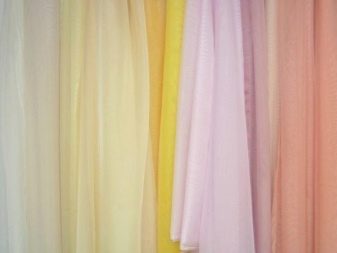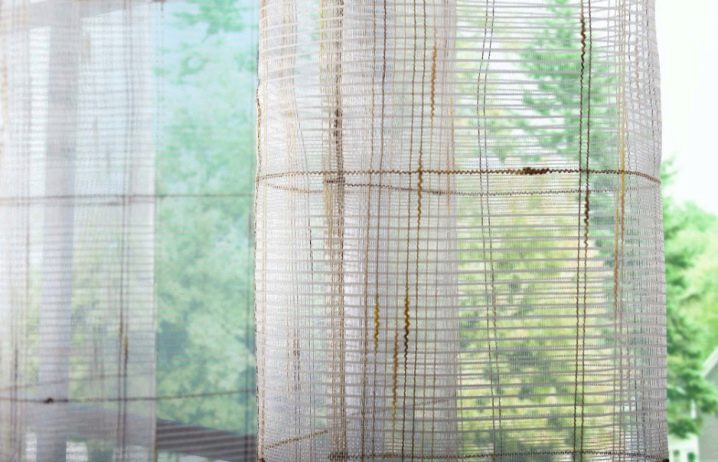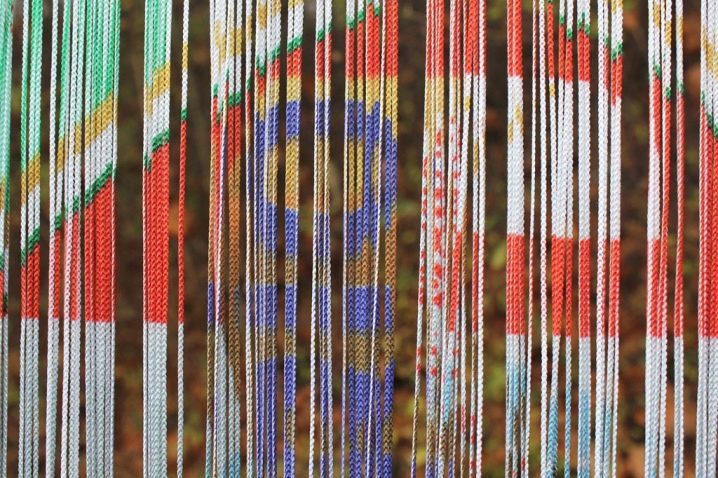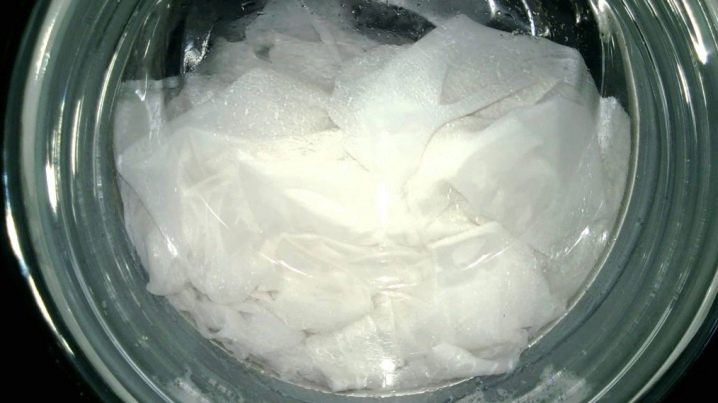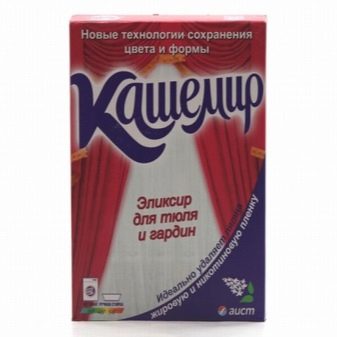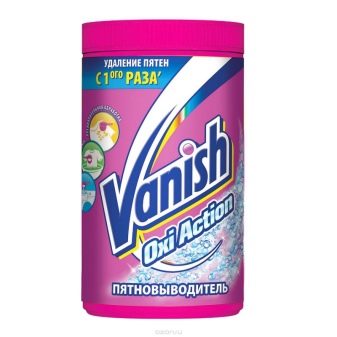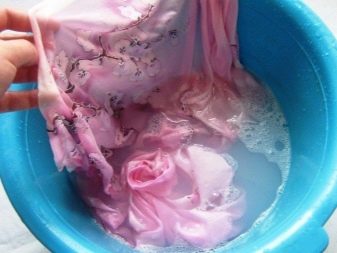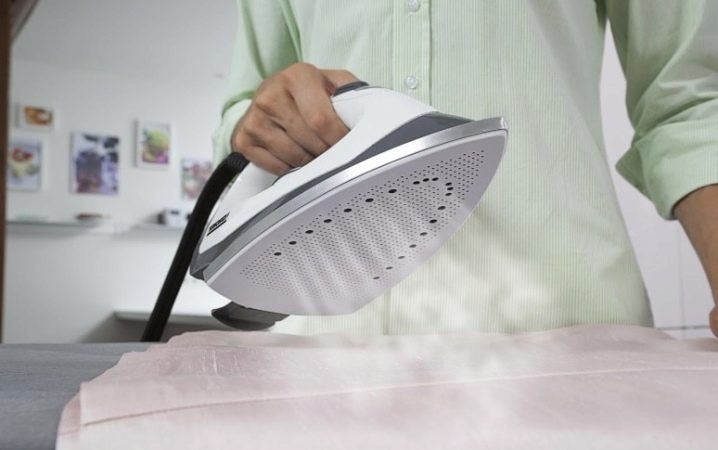How to wash tulle?
No window is complete without textile design. The most popular, and most often used in the decoration of the window tulle is light, airy and extraordinary elegance. But over time, it may appear various pollution in the form of stains or plaque. In order to return the original beauty of tulle, it is necessary to wash it.
Features and varieties
Almost all types of curtain fabrics are made of polyester, being present in one or another percentage ratio.
Depending on the type of fibers added to the material, having a different origin, tulle can be divided into the following types: nylon, net, veil, organza, muslin and batiste. Each type has certain properties and characteristics that must be considered when washing.
- The composition of the organza, in addition to the specially treated polyester fibers, can be added fibers of silk or viscose. Depending on the method of processing organza, its surface may be matte or shiny. Thin, but rigid organza - the fabric is not cheap, its manufacturing technology is very time consuming, exposing the fibers to multiple specific processing. Thanks to this sophisticated technology, the fabric has many advantages. Good transparency allows to use it in rooms with insufficient illumination. Polyester fibers give the fabric strength and a high degree of wear resistance.
Designers love organza not only for its transparency and airiness, but also for its excellent compatibility with most types of thick curtains. It may be different shades, but the most beautiful are two types: a chameleon and a rainbow. Color organza goes well with backlight. For hostesses, organza is also a desirable fabric, because it does not attract dust, is resistant to sunlight and does not crumple.
- Nylon tulle is no less popular. Unlike organza, it is more durable and does not lose this property even when it is wet.as nylon fibers do not absorb water. After washing, the form of capron curtains does not change, so they do not need ironing. In addition, due to low heat resistance, heating up to 215 degrees can lead to tissue melting.
This thin fabric with a pleasant luster has a great elasticity, exceeding the elasticity of natural silk many times. Cream, beige and other pastel shades of nylon tulle are perfectly combined with darker and denser curtains. There are nylon fiber and features that need to be considered during processing. It is not resistant to acids.
- The veil has a lower light transmission. The low degree of transparency does not allow light to diffuse, so it is better not to use this fabric in rooms where the windows face the shady side. But unlike organza and nylon, it can be used as an independent window decor, without thick curtains. Moreover, it drapes well, gathering in soft beautiful folds.
But there are small cons of the fabric. The curtains of the veil have the ability to quickly accumulate static electricity, as a result of which they need to be processed more often than many fabrics. In addition, the veil has a high degree of crushability.
- Netting or netting tulle may have, in addition to polyester, elastane or viscose fibers. But more durable and able to keep the shape of the fabric consists of 100% polyester. It passes light well and possesses high air permeability. This fabric is usually used with thick curtains.
There are several types of mesh. A simple grid consists of air, interconnected cells. The shape and size of the French mesh varies. Mesh with embroidery has a slightly different surface. Openwork patterns can be applied over the canvas or combined with sections of simple cells.
- Another type of mesh is a muslin. It consists of threads that have a smooth and dense texture. Recently kissey is often used not only as a decoration of windows, but also for various niches and doorways.
- Batiste is a thin, delicate fabric that, in addition to polyester yarns, contains fibers of either cotton or flax. Perfectly passes air and light. Batista curtains are not susceptible to deformation, they dry quickly after washing and are easy to iron.
How often should I wash?
In order for tulle to serve you as long as possible, while maintaining its aesthetic appearance, you should wash this fabric at least 1-2 times in three months. After all, the accumulated dust on tulle tissue can cause allergic reactions caused by the development of dust mites and other microorganisms.
Even in the absence of allergies, inhalation of dust is not very good for health, in the first place, lungs are affected.
In addition, the timely washing of tulle will take much less time and will not have to save him from the gray plaque and yellow streaks. The frequency of washing also depends on the location of the curtain.
If the tulle hangs in the kitchen, it is better to wash it as often as possible, and if in the living room, then once every three months is enough. This rule does not apply to windows overlooking a busy road; washing here is appropriate at least once a month, especially in summer.
What can be soaked before washing?
In order to better wash the tulle in the main wash, it is necessary to soak it for a while.
For pre-soaking need 5-6 liters of warm water, which must be added five tablespoons of soda or shavings from soap.Then you need to mix the water well in the tank until the components are completely dissolved and put the tulle there for 1-1.5 hours.
If the washing of the curtains was carried out for a very long time, then it is better to repeat the soaking two, and maybe even three times.
Detergent
In order not to damage the structure of the delicate tulle fabric and produce high-quality washing, you can use specialized tools sold in stores. In addition to high-quality cleansing of complex contaminants, they can gently bleach and slightly polish the thin tulle fabrics.
Powder "Cashmere" not only copes with the fat and nicotine film, but also removes complex stains. Powder Universal Remedy Vanish copes with most types of stains. But you can use ordinary detergents.
Powders for a hand and machine wash perfectly are suitable for the synthetic and mixed fabrics. There are compounds with whitening ingredients, and without them.
In order for the tulle to look great after washing, you must follow all the recommendations indicated by the manufacturer on the label. First of all, it is necessary to pay attention to the temperature regime.For some products, such as organza, the temperature should not exceed 30-40? C, and the fabric of cotton and polyester will withstand a temperature of 50-60? C.
Ways
Manually
The manual washing method is chosen by many housewives, thanks to him the risk of damaging delicate expensive tulle tends to zero, and even the most polluted places are better viewed.
This method is good because you can add various folk remedies to ordinary powders that help to cope with very complex contaminations without spending money on expensive items.
Soda is most commonly used for whitening. Washing with soda ash makes it possible to return a white-to-white look to tulle without greasy stains and other contaminants. At 8-10 liters of warm water, 100 g of any inexpensive powder and two tablespoons of soda are taken. We pour the soda and powder into warm water, mix until the components are dissolved, and soak the tulle fabric for 20-30 minutes. After this time, you can start washing.
Tulle can be washed with aspirin. Thanks to these wonderful pills, you can return the fabric of the original whiteness. For 7-8 liters of warm water you need to take 5 aspirin tablets.Dissolve aspirin and drop tulle into this solution for 8 hours. It is better if the tissue remains in this solution overnight.
In the washing machine
Not all housewives like to wash the tulle fabrics by hand, many simply don’t have time for it. Yes, and modern machines have many functions that help quickly and effortlessly cope with the washing of any complexity, the main thing is to choose the right temperature and mode.
Even a very dirty fabric with hooks can be washed at home with an automatic machine.
There are some rules under which you can avoid many problems. For washing tulle fabrics you need to choose a program of hand washing (for delicate fabrics) with a temperature regime of 30-40 degrees. For fabrics with a composition of more than 50% natural fibers, the temperature can be increased to 60 degrees.
Before you put any tulle fabric in the drum of the machine, you need to carefully fold it in order to avoid the formation of creases, especially if you plan to spin. Picky fabrics, such as organza, veil and, especially silk, are best washed in a mesh bag, and in the absence of it - in a pillowcase.
For washing such fabrics it is better to use gel, but half the usual dose. This is due to increased foaming. To ensure the removal of residual detergent, you must include an additional rinse.
The spin mode should either be gentle, no more than 400 revolutions, or it should not be switched on at all, but allowed to drain to the water from the fabric in the usual way.
What is the best way to get rid of dullness and yellowness?
To get rid of tulle from such difficult pollution as grayness and yellowness, you can use quite affordable means. The effect of their impact is not worse than that of modern household chemicals, and the cost is much lower.
To return the fabric to the original whiteness will help the solution of brilliant green with salt. To prepare the solution, you need half a liter of warm water, to which we add two tablespoons of salt and mix thoroughly until it is completely dissolved. Then you need to add 15 drops of brilliant green and mix thoroughly again. Leave the solution alone to complete precipitation for three minutes.
Ready solution needs to be added to the water intended for the last rinsing. But this must be done very carefully, without falling sediment into the water for rinsing by filtering. Otherwise, green spots may form on the fabric.
Tulle in the resulting solution rinse, stirring occasionally and slightly pressing for no more than 3-4 minutes. After that, the tulle needs to be removed and, without pressing, hang to dry. Grayness and yellowness can be eliminated with ammonia, hydrogen peroxide and blue.
How to remove rust?
There are several ways in which you can get rid of rust. Rust, in fact, is alkaline, which means that when exposed to acid, it is neutralized. The most effective are formic and oxalic acids. When working with acids it is necessary to use protective gloves.
Oxalic acid in sufficient quantity is found in raw potatoes. As a catalyst, you need to use salt, pre-applied it to the potato. After which you can treat the stain with rust, and then rinse the fabric.
As a rust neutralizer, you can use lemon juice, which moisten the stain, and then iron the iron through the fabric. Remove the remaining lemon yellow spot with hydrogen peroxide. Rinse the tulle and then wash as usual.
In addition to folk remedies, there are specialized stain removers.Especially they are useful for fabrics that do not tolerate the effects of acids.
Remove grease stains, soot and soot: tips
- Dishwashing gel does a good and fast handling of fresh greasy stains. When hand washing, add one tablespoon of the product and the same amount of powder, mix and soak the tulle for 15-20 minutes. After being washed as usual.
- Vinegar works well with numerous grease stains. To do this, it is diluted with water 1: 1 and the fabric is soaked in the resulting solution. After drying, the tulle is rinsed and washed. Old fat stains can be removed with a solution of glycerin and ammonia (in equal proportions). The solution is applied to the cotton wool and first wipe the halo of the stain, and then completely all the pollution.
- For organza, chiffon and nylon, another solution will do. You need to mix ammonia with vinegar (50 mg each) and add one tablespoon of salt. Stir the mixture thoroughly and then apply to the stains. In order for the tool to work, you need to wait 10 minutes. After that, stretch the fabric in a normal soap solution.
- In order to get rid of soot and soot on the tulle, you must first wash it with either powder or laundry soap. Then you need to dissolve the usual soda in warm water, two tablespoons is enough. Treat contaminated places with dishwashing liquid and soak the tulle in the solution for 8 hours. After that, rinse the cloth and hang to dry.
How to iron tulle curtains: with and without an iron?
In order to bring the tulle in proper condition you need to stroke it. Delicate fabric needs a special temperature regime, and the size of the tulle fabric requires a special approach. There are some rules that must be followed when ironing.
- A suitable mode for ironing tulle should be no higher than 80? C. For fabrics with a large percentage of natural fibers, the temperature should be increased.
- Tulle is better to iron when wet, immediately after washing, with the exception of organza. It can be processed only after complete drying. Dry cloth should be ironed through wet gauze. For organza, tissue paper is used instead of gauze.
- A large tulle fabric should be started to iron from the edge, gradually moving to the center. Very long tulle is more convenient to place on the ironing board. At the end of ironing, the fabric must be spread out on a large surface for 7-9 minutes, in order to avoid wrinkling.The iron is not used during ironing.
- The surface of the tulle can be put in order with the help of a steam generator, previously hanging it on the eaves. In the absence of all appliances, the curtains can be smoothed on the window, simply by hanging them wet on the cornice.
Reviews
Most housewives agree that it is much easier to tidy up the tulle fabric if it is washed at least once every three months.
Many agree that using both popular and specialized means helps to get rid of virtually all types of stains. Modern machine, according to most, helps to significantly reduce the washing time.
The video will tell you how to whiten the tulle with green paint.
